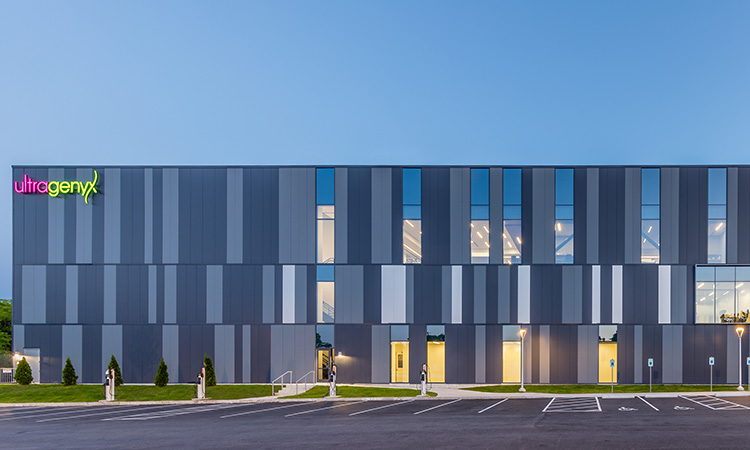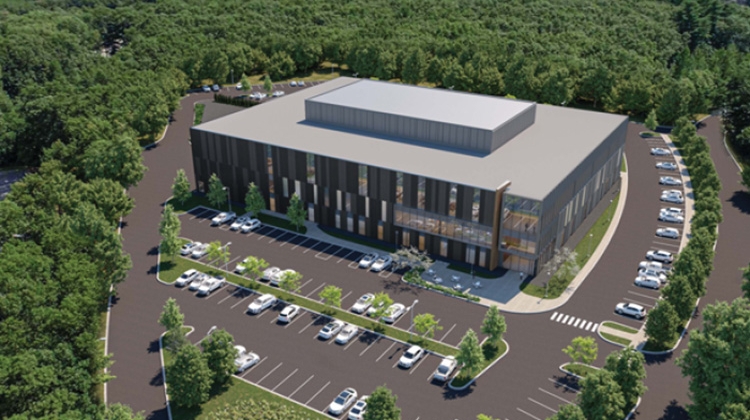In a nutshell, what will this presentation focus on? Why is it important?
Our clients are creating novel facilities for novel therapeutics. Often, they have technologies proven at the benchtop that need to scale up to clinical and commercial manufacturing. This process may be new to pre-revenue therapeutic companies—they’ve never been on this journey of starting with a proverbial “blank sheet of paper” that will become their future production facility. At this juncture, establishing a partnership based on trust with a healthy team culture is critical to coalesce the experience of the design team with the scientific knowledge and culture behind a novel therapy.
Our presentation will focus on this design process through the lens of creating the new Ultragenyx facility in Boston, Massachusetts. It will be discussed from the perspective of the client, Gil Stevens, and CRB’s design team.
The Executive Director of Global Engineering & Capital Projects from Ultragenyx will join designers from CRB to discuss the collaboration, steps and successes that brought this blank page to life. Together, we’ll cover how we created a culture of partnership and respect while keeping the end goal in mind. We will show some of the tools and design approaches we took to create alignment when establishing the qualitative and quantitative objectives of the project.
How does biopharmaceutical facility design differ from traditional pharmaceutical facility design? What are a few examples of the ways in which biopharmaceutical facility design is different?
With the speed of innovation in biopharmaceuticals today, we are regularly asked to create facilities that incorporate new and developing parameters and requirements at a much quicker pace than we have experienced with traditional pharma facilities. A modern biopharma facility may not have established user requirements when the project starts, so we may need to create these while designing the facility in order to meet the expedited schedules for clinical manufacturing and commercial demands.
What are a few external factors leading to the importance of biopharmaceutical facility design, and the recommended approach of starting from a blank slate?
Starting from a blank slate is often a result of small, growing companies that do not have established standards and are creating their identity as the company grows. Therefore, defining a design process that allows us to guide the project along while defining the overall objectives is critical to the project’s success.
What are a few internal factors that may drive this need for a change in the approach?
Starting from a blank slate with a project that has incomplete or unclear requirements can often mean longer design schedules and less cost certainty as a result of “building the plane as it is flying.” Therefore, we implement tools and a design process that allows the client to better understand the decisions they are making. In these instances, we implement modeling software to help project teams visualize the flows, benefits, and challenges of different arrangements. We also use realistic renderings and animations to help build alignment with company leadership on capital investments into the quality of campuses they are creating.
What are potential internal hurdles with biopharmaceutical facility design?
One hurdle that we often encounter with these growing companies is that they are hiring and building their team as we design the project. Therefore, managing the continuously growing perspectives, new ideas, and need for change is critical. This will happen from feasibility, concept design, and basis of design, into detail design and throughout construction. The rigor and approach to controlling these changes evolves as the project becomes more defined when changes have a larger impact on schedule and cost.
What is the first step for building an SFP?
The first step in developing a strategic facility plan is ensuring that the right stakeholders and decision-makers are engaged in the process. This allows the team to move to project visioning, defining goals and priorities, establishing a framework for achieving the end goals, and maintaining rigor to revisit and reassess throughout the plan’s implementation (e.g., design, construction, post-hoc).
Organizational leadership should be involved in this first step. All stakeholders from the functional groups that will be impacted should be included in this process as well.
Why do you recommend starting with the end? What pain points can this help teams avoid? What additional advantages can this provide?
Starting with the end goal – and intentionally pausing to maintain alignment – ensures that participants remain engaged in the process, building consensus for the outcomes.
Can you outline and describe the main aspects of an SFP roadmap?
Aspects should include a clear understanding of the end goals and the objectives needed to meet those goals, defined by measurable milestones but including the ability to pivot as unforeseen roadblocks present themselves, as they inevitably will. Specific requirements will vary from project to project and should be identified by the stakeholder team through an engaging and collaborative visioning and prioritization process.
What do most teams get wrong/run into challenges with that this plan can help folks avoid? Why/how?
Allowing unforeseen changes to cause a team to lose focus on the end goal and failing to provide effective change engagement can have significant impacts on a project. Working through a process like this helps teams to stay focused and unified.
Are there perhaps two case studies you’d like to highlight that speak to the importance of one of the elements noted above)?
Ultragenyx, which will be described in our presentation, exemplifies many of these process elements. Following the conference, attendees who have pre-registered will be able to tour the Ultragenyx facility on Wednesday, 19 June.
 >
>
What do you hope folks take away from this presentation?
We hope the audience will gain an understanding of the relationship between a strong process and a successful result. Our case study will illustrate the following lessons learned:
Keep the end in mind. Ensure key stakeholders are looped in from the beginning to build consensus from the start and retain alignment along the way.
Collaborate and engage early. Take thoughtful pauses. Progressively raise the bar for changes. Ensure the entire team understands the impact of any changes as plans progress. Establish a strong change evaluation process. Be deliberate on how decisions will be made in real-time.
Establish criteria for introducing new processes. Build a system for adaptation that all stakeholders can follow and get behind.
Learn More & Register







